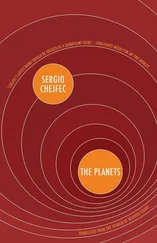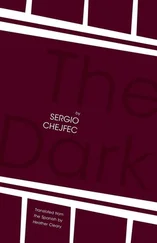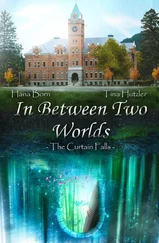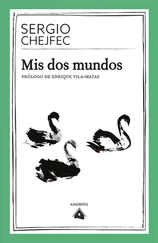Once again I discovered on the ground the kind of earth with which I was by now familiar: a worn, near-pulverized gravel that resembled dirty, powdery sand. As I walked along, the noises from outside became more subdued and, apart from the predictable trillings and screeches now and then, a threatening silence prevailed. I don’t know, to me the silence seemed the most visible proof of the falsity, or rather, the invention or manufacture, of an allegedly natural environment in the middle of a city. In the past, the park had probably been the site of farms or a post station, and then the city proceeded to engulf it. As I considered this, I realized that my dichotomous thinking was surfacing, because on the one hand, I love parks — or their funereal variant, cemeteries — and love them far more than any space devoted to natural habitat, or the alleged wild; but on the other, I never pass up a chance to slander them inwardly and verify, time and again, whenever I walk through them, the forced affectation that sustains them. At any rate, I suspect it’s a useless battle, lost in advance: who would have any interest in what I think about parks, or better still, who would care what I think about anything. That’s why, as I wrote before, I prefer untended parks, those that have been overtaken by neglect, because no one expresses any strong opinion about them and so they take on a still more autonomous life and, in that sense, presumably a more authentic one. . Although of course, one can never know.
I now covered a long stretch on the diagonal path, where everything seemed to sleep, protected by the shade. It was an ideal path for walking aimlessly, indifferently. I kept seeing discarded candy wrappers and empty soft-drink cans on the ground. Some had been there for a long time, since they were weatherworn and had, in their own way, adapted to the colors in their surroundings. Because there were no benches or tables nearby, I surmised that on the weekends the path was heavily used. This made me want to know where it led to. From time to time I saw large trash cans, which were in any case brimming with papers and plastic bags. Not much else at all, besides the trees, the dry earth and the predominant shade. As had happened several times earlier on this outing, before long I spotted a light area toward the end of the path; and when I drew closer, some ten minutes later, I glimpsed a tableau that at first disturbed me, I don’t know why: over there a good-sized, tranquil lake lay hidden, and from where I was approaching I could make out some unexpected, gigantic swans, stock-still and arrayed as if in regimental formation. As I drew nearer to the water and the scene grew better lit, I felt a mixture of wariness and wonder. Wariness owing to something quite primal, for which I realized I wasn’t prepared: simply the size of those pedal boats in the shape of swans, which one associated more with some monstrous scale than with any idea of a replica or an amusement; and wonder because of the illusion of standing before an inanimate army, but one that seemed subject to a latent vitality, ready to awaken or be activated at any moment.
Once at the edge of the lake, amid thickets of greenery slanting out toward the water, which made for a certain difficulty in moving about, I could appreciate the grouping of swans in all its majesty and realism. They were some three meters tall, and despite their size, their bodies were perfectly proportioned, so that the stylized curve of their necks, famously praised by modernista poets, offered in these gigantic models a new and incontrovertible argument confirming it. The swans’ verisimilitude extended even to minor details, such as the color of their bills, a brilliant orange verging on red, with one exception alone, whose bill was yellow, as in all likelihood occurs now and then in real life.
I don’t know whether there are many species of swans; the one I’m familiar with was well represented there in any case: the so-called common swan, its body white and with its characteristic black mask rendering its face mysterious and each specimen seemingly identical to the rest. Nor do I know the name for the other group I saw there — most likely “white-faced swan,” as simple as that — or perhaps these bordered dangerously on geese, since their only difference with the others was that they lacked a mask. Otherwise both types displayed a similar morphology. As the name indicates, the face of the white-faced swan exhibits no other color, apart from its bill, already mentioned, and its black eyes. The common swan, on the contrary, has a black cloth that rises from the base of its bill and stretches to cover its eyes. Described that way, it might seem to be a blindfold, but actually the mask is a bit wavy, and lends this variety a grace and dynamism that would otherwise be lacking without this whimsy, which at first strikes one as theatrical; also, toward the edges of its face, where one would expect its ears to be, if it had ears, were white openings that, I think, serve as eyes. Anonymous swans, we might imagine, attempting to pass incognito. The white-faced ones, on the other hand, have eyes that are two large black circles practically stamped on the skull.
Unlike almost all real swans, these were missing the caruncle, the fleshy outgrowth that grows at the base of their bill or on the head, and which, according to the field guides, tends to be erectile. It made sense that the swans lacked this accessory, since the only motion they could possibly simulate was by virtue of their pedals. I keep a photo in which they are arrayed in rows of six beside the boarding ramp, presumably moored. Beyond what I’ve just described, both their silence and their demeanor impressed me. These qualities might seem fantastical, but I knew I wasn’t deceiving myself: one has to activate one’s imagination to bestow life on these swans. It’s the same with all inanimate things, we have to imbue them with life, but rarely do we find in the inanimate the type of silence or demeanor I now confirmed, nor to such a degree, as we seek, let’s say, to fit them into some human scale. On Mondays the swans clearly didn’t swim too much. If one wanted to endow them with life, one could believe it was owing to the fatigue that had built up over the weekend, their heaviest workdays. Nonetheless, despite their being, so to speak, parked that way, their lifelike side was borne out in the fact that they seemed ready to move at any minute.
The swans held two passengers and had dual sets of pedals, and on the left, similar to a car, was an semi-circular iron handlebar that made do as the rudder. I began to walk through the area, gazing at the lake through various arrangements of branches, or straight through the leaves of shrubbery. I stood in the shade, camouflaged in my own way by thickets that were nearly marshy, but curiously, everything else, the whole of the lake and the group of swans, but not me, seemed to be crouching, lying in wait for a certain signal. The trees on the opposite shore of the lake were mirrored in the water, itself fairly green, but some patches of bougainvillea, lilac-colored in this case, also stained the lake’s surface.
Probably because of their uniform alignment, but also the absence of any distinguishing marks — the exception being the yellow-billed swan — the swans at first seemed to lack individuality. But that first impression didn’t last long, because when I’d walked onward, after taking a path that ran parallel to the shore, and reached the swan-rental facility, from which I could consider the creatures from their tail ends, I could see that a particular number had been painted on each. Closest to me were Nos. 24, 3, 15, and 11; Nos. 18 and 10 completed the row. I’m not sure why these details matter. In a park where the presence of humans had adapted itself so closely to the nature of the surroundings, these artificial models seemed mysteriously alive to me, in their own fashion eloquent and mute at once.
Читать дальше












